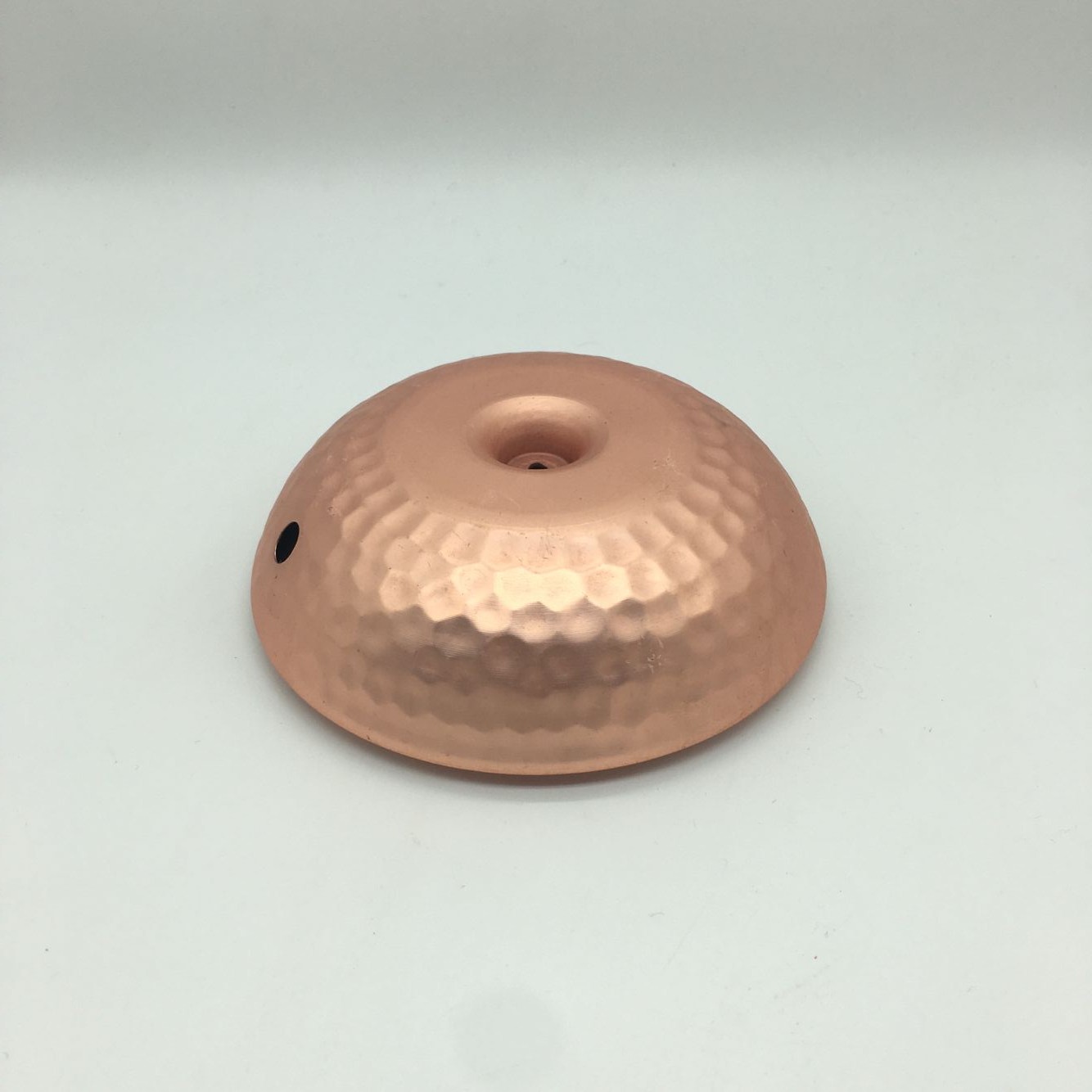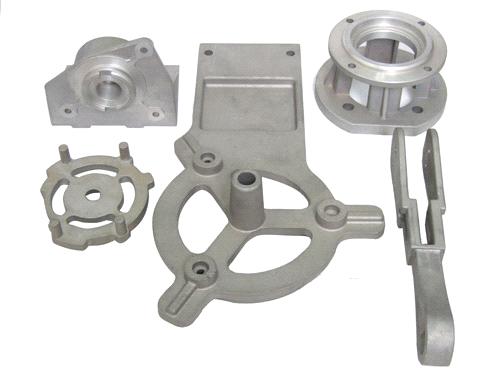- During pouring, the environment around the mold to be cast must be checked. Before pouring, the steel grades of castings shall be aligned, the sandboxes to be poured shall be arranged in order, and the gates shall be arranged in a straight line to facilitate crane operation and pouring. The medium and small mold or the middle and late casting mold shall be arranged in the area near the furnace, in order of high and low order and pouring time. The early casting and high mold are arranged in the area far away from the furnace. At the same time, check whether the pouring channel is unblocked, whether there is water on the ground, whether there is dampness, whether there are flammable and explosive articles, and whether it is convenient to evacuate in case of accidents.
The parting surface of the pit molding mold shall not be higher than the upper plane of the pit; If it is higher than the upper plane of the pit, remedial measures must be taken. For example, after pressing the iron, fill the back sand, pound it, and blow it hard to prevent fire from running during pouring.
The pit piece includes any side or multiple sides of the cement pit piece, and the pit shall not be excavated before pouring. The pit plane around shall be higher than the parting surface of the mold to be cast; Otherwise, remedial measures must be taken. For example, after the pit is filled with sand, it is rammed and compacted, and then a heavy enough pressing iron is pressed to prevent fire from running during pouring.
Two adjacent pit pieces, including cement pit pieces, shall not be pulled out of the pit before pouring, to avoid damaging the casting mold of the piece to be poured or running out during pouring.
If there is water on the ground near the castings to be poured, the castings shall not be poured to avoid safety and quality accidents.
- Half an hour before pouring, spot-check the floating sand in the mold cavity and runner to see whether the gate meets the requirements and the preheating of the mold cavity that needs to be preheated. Also, check whether the pressing iron of the mold is sufficient or whether the box clamp is locked to prevent fire from running during pouring. Prepare necessary tools and materials, such as crowbars, sample spoons, as well as heating agents, heat preservation agents, and other materials used to cover the riser.
- The pouring shall be commanded by a specially assigned person. The commander shall know the material of the furnace, the gross weight of the casting, the amount of molten steel to be poured, the pouring height of the riser, the number of molds, and the quality and distribution of the pressed iron before pouring. The pouring scheme shall be determined after discussion before pouring oversize and important parts; During pouring, special personnel shall command pouring according to the resolution; The safety officer must monitor the wood on site and strictly control the number of people in the pouring site.
- According to the sand mold position, sprue condition, and the size of the steel ladle on the site, set up a suitable pouring platform. When the height of the pouring platform exceeds 1.5m, there should be a ladder to get up and down, and the road should be unblocked. In case of emergency, the pouring workers can leave the site quickly to ensure safe production.
- The pouring personnel shall prepare 2-3 shovels, sufficient back sand, covering agent, etc., and wear labor protection articles.
- The casting diameter of the steel ladle shall be determined according to the requirements of the largest casting piece in the same furnace. The pouring sequence and principle were as follows: the parts with high quality were poured first, and the parts with low quality were poured later; The mold of double sprue shall be poured first, and the mold of single sprue shall be poured later; Pouring first and then pouring again; According to the number of casting molds, the height of large riser can be about 50 mm. After casting other molds, if there is residual liquid steel, the riser can be poured to the height required by the process. If there is no residual liquid steel, the amount of covering agent added at the riser should be doubled.
- The temperature of molten steel shall be measured before pouring, and the pouring temperature shall be following the pouring temperature specified in the process. The early pouring temperature is higher, which is suitable for complex and thin wall castings, while the late pouring temperature is lower, which is suitable for simple and thick wall castings.
- During pouring, the pouring port of the steel ladle shall be aligned with the pouring cup of the mold to prevent the molten steel from pouring out of the mold. At the same time, the distance from the sprue cup shall not be too high, and the contact time between molten steel and air shall be minimized to minimize secondary oxidation. The initial flow of molten steel shall be smaller, to achieve trickle pouring to reduce the erosion of molten steel on the mold and prevent splashing, and then gradually increase the flow. The flow shall not be interrupted during mold filling and the liquid flow shall be kept straight and smooth. Generally, small parts, thin-walled parts, and parts with the complex structure are poured first, and then large parts and thick wall parts are poured. If the ladle is not baked well, considering that the temperature of molten steel at the bottom of the ladle may be low, a slightly larger casting can be poured first. When the liquid steel rises to the riser, it should be poured slowly to the required height of the riser. This can not only prevent the liquid steel from overflowing but also prevent the box from lifting and fire running. It is also beneficial to compensate for the volume shrinkage of liquid steel and solid steel. Pour slowly at the beginning of pouring, and then pour at full speed. After the molten steel rises to the open riser, slow down the pouring, and immediately add the covering agent. For castings with concealed risers or high manganese steel castings, after the casting mold is filled, spot cast 1-3 times on the gate. After pouring, add 1-2 times of thermal insulation covering agent and ensure that the riser does not show red.
- Bleed air immediately when pouring starts.
- After pouring, the pouring time and insulation time shall be indicated on the sandbox.
- For castings, alloy steel parts, trial products, or key parts with a mass greater than 500 kg, insert the heat number into the riser. Test bars shall be poured for each furnace of molten steel.
- To ensure that there is no quality accident of casting under pouring during the pouring process, if one of the following conditions is met, the remaining molten steel in the steel ladle shall be detected with a steel drill: (1) When the number of castings poured with each package of molten steel is greater than or equal to 3 boxes, the drill shall be detected before pouring the third box; (2) When the number of castings poured from each ladle of molten steel is more than or equal to 2 boxes, if the amount of molten steel poured is more than 80%, probe drilling shall be carried out when pouring again.
- When pouring multiple boxes of castings with one ladle of molten steel, to ensure full pouring of post pouring castings, the pouring worker must prepare oxygen burning tools, and blow and burn the pouring port in time when necessary.
- When pouring large steel castings with multiple heats, it is necessary to assist in the tapping sequence of each furnace, the distribution of bridge cranes, the position of steel buckets, and the pouring sequence. Generally, each casting opening can be opened for pouring at the same time. When the liquid steel pouring riser is required, the pouring temperature of the liquid steel of the pouring riser shall be 30-50 ℃ higher than the pouring temperature of the molten steel.
- The pouring shall be monitored by a specially assigned person to prevent the slag from entering the cavity.
- In case of leakage of molten steel from the casting mold during the pouring process, on the one hand, measures shall be taken to block it, on the other hand, small flow and slow pouring shall be adopted, and the flow shall not be interrupted, to avoid cold shut defects of the steel castings.
- If the process stipulates that the finished product sample needs to be taken for component analysis during the pouring process, the sample ladle shall be used to take samples of molten steel, and the heat number shall be marked.
- If there is any residual molten steel after pouring, it should be poured into the mold prepared at the fixed position in advance, or into the prepared dry pit, and the surface should not be sanded after pouring to prevent anyone from stepping on it by mistake.





